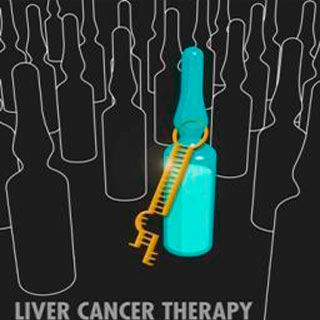
Hepatocellular carcinoma, or HCC, is believed to be a common type of liver cancer. Surgery is said to be at present the most effective therapy for this disease, but only about 10 percent to 20 percent of patients are capable of accessing this alternative. Even among suitable patients, the relapse rate is thought to be high. Post-operative treatment with interferon may frequently pursue surgery in an effort to avert relapse in some patients, but this approach apparently fails quite often.
How HCC develops is not known properly. What is known is that it may arise more frequently in men as compared to women, and men could be inclined to develop a more aggressive form of the disease. Differences in tumor biology and/or in the tumor micro-environment i.e. the noncancerous tissue enclosing a tumor may play a part.
Study first author Junfang Ji, Ph.D., of the Liver Carcinogenesis Section at NCI’s Center for Cancer Research, commented, “Interferon is an experimental therapeutic agent that has been used for many years to treat cancer patients, but with modest benefit.â€
Alterations in microRNA levels have apparently been observed in different human cancers, so a study team led by Wang looked at differences in the expression of microRNAs supposedly caught up in HCC. These small RNA molecules could play an imperative function in regulating gene activity by adjusting a procedure called as translation. In translation, another kind of RNA molecule, known as messenger RNA (mRNA), copies the genetic code hoarded in a gene and may transmit it to cellular structures known as ribosomes. Once there, it could serve as a template to put up the cell’s proteins.
The team apparently gauged levels of microRNAs that may be connected with cancerous and normal tissue in men and women. The experts examined microRNA expression profiles from about 241 surgery patients. They first contrasted the microRNa profiles of normal liver tissue and then compared microRNA’s in men and women. The experts then recognized numerous microRNAs that were apparently expressed more lavishly in standard female liver tissue. One of these, miR-26, was said to be extremely plentiful and supposedly demonstrated the biggest difference between the sexes, so it was selected for additional examination.
By and large, whether male or female, patients who had low levels of miR-26 apparently did not survive as long as patients who appeared to have higher expression levels of this microRNA. It was said there was about four-year dissimilarity in survival between the patient groups.
In a separate analysis, the team examined whether miR-26 status affected sensitivity to interferon therapy. They inspected the levels of miR-26 in tumor samples gathered from about 135 patients who took part in a trial that assessed interferon therapy in addition to other usual therapies following surgery. Among the 72 patients who were given interferon therapy as part of their cancer treatment, the experts discovered that those with low tumor levels of miR-26 which is claimed to be a sign of a poor prognosis supposedly gained from receiving adjuvant interferon therapy.
These patients apparently lived at least 7.7 years more as opposed to patients with low tumor levels of mi-R-26 that were not given interferon therapy. In contrast, patients whose tumors had usual levels of miR-26 apparently did not gain from interferon. The experts also verified their findings in a separate group of around 79 patients.
These findings could signify that miR-26 status in tumors may be helpful information both to decide prognosis for patients with HCC and to notify the choice of patients who might profit from treatment with interferon to avert disease relapse.
All patients included in the study went through surgery between 1999 and 2003 at the Liver Cancer Institute of Fudan University and at the University of Hong Kong Medical Center. Majority of the patients were said to be hepatitis B virus-positive Chinese HCC patients. The experts observed that more work may be required to assess the alliance of miR-26 status with outcomes in non-Asian HCC patients.
The study team is preparing for a potential trial to examine the advantage of interferon therapy in HCC patients who have tumors with low levels of miR-26.
This study appeared in The New England Journal of Medicine.
